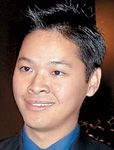- Acne
- Actinic Keratosis
- Aesthetics
- Alopecia
- Atopic Dermatitis
- Buy-and-Bill
- COVID-19
- Case-Based Roundtable
- Chronic Hand Eczema
- Chronic Spontaneous Urticaria
- Drug Watch
- Eczema
- General Dermatology
- Hidradenitis Suppurativa
- Melasma
- NP and PA
- Pediatric Dermatology
- Pigmentary Disorders
- Practice Management
- Precision Medicine and Biologics
- Prurigo Nodularis
- Psoriasis
- Psoriatic Arthritis
- Rare Disease
- Rosacea
- Skin Cancer
- Vitiligo
- Wound Care
Article
Meeting the MRSA challenge
Atlanta -- "Community-acquired MRSA is just exploding among the urban patient population we serve," says Henry Michael Blumberg, M.D., an epidemiologist and director of the division of infectious disease at Emory University School of Medicine.
Atlanta - "Community-acquired MRSA is just exploding among the urban patient population we serve," says Henry Michael Blumberg, M.D., an epidemiologist and director of the division of infectious disease at Emory University School of Medicine.

Disquieting study results
"The vast majority" of those infections were of the virulent USA300 strain that was first isolated in September 2000. While Centers for Disease Control and Prevention (CDC) publications indicate reports of CA-MRSA outbreaks in 21 states as of 2003, the speed with which it has spread and anecdotal reports suggest that the USA300 strain have become ubiquitous.
"Our study found that in two-thirds of the cases, patients initially were started on therapy to which the (MRSA) isolate was resistant," Dr. Blumberg tells Dermatology Times.
That was because physicians were not aware of the changing epidemiology of the infection. "Since that study we have worked hard to educate physicians at how common MRSA soft-tissue infections are."
He says their hospital physicians are now taught to treat soft tissue infections on the assumption that they are caused by USA300.
Know the bug, treat appropriately

Patients treated on an outpatient basis are given the oral antibiotic linezolid; other options include trimethoprim sulfa and clindamycin, if the strain is not resistant to those medications. The same treatment patterns should be applied by dermatologists in private practice.
Dr. Blumberg says, "It is important to know the local epidemiology; if you are in an area where CA-MRSA is predominant, you should treat accordingly, but my sense is that this is an issue across the country."
CA-MRSA historically has been susceptible to most classes of antimicrobial agents, a trait that was used to distinguish it from hospital-acquired strains of MRSA. But USA300 breaks that paradigm. Publication of the complete genome sequence of USA300 in The Lancet on March 4 demonstrates why.
Lead author Binh An Diep, Ph.D., and colleagues at the University of California, San Francisco, found a unique arginine catabolic mobile element (ACME) that has not been seen in other strains of S. aureus. He says the strain chromosomally encodes resistance to beta-lactams and ciprofloxacin; it even has the potential to integrate a vancomycin resistant transposon, which could render it resistant to that last-line treatment option.
Genomic evolution
The ACME encodes an arginine deiminase pathway and an oligopeptide permease system that could contribute to the growth and survival of USA300.
The gene segment is similar to and likely was horizontally acquired from S. epidermidis. It appears to enhance fitness and pathogenicity in USA300, as the strain has undergone rapid clonal expansion without great genomic diversification.
"It is interesting to see the reading frame showing that degree of pathogenicity; it certainly is troubling from a public health point of view," says Steven J. Projan, Ph.D., vice president Biological Technologies at Wyeth Research.
Newsletter
Like what you’re reading? Subscribe to Dermatology Times for weekly updates on therapies, innovations, and real-world practice tips.















